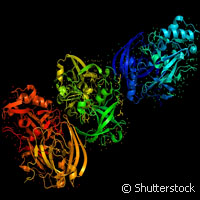Study sheds light on peripheral cell regeneration
Scientists long ago identified the difference between peripheral and spinal cord nerves: the former can regenerate themselves after injury. The question, however, is why? A team of researchers from Germany and the UK offer new clues into how peripheral nerves work their magic. The study's findings, presented in the journal Cell, could lead to new improvements in peripheral nerve repair. 'We know a lot about how various cell types differentiate during development, but after a serious injury like an amputation, nerves must re-grow,' explains Professor Allison Lloyd of University College London (UCL), a co-author of the paper. 'They need a new mechanism to do that because the developmental signals aren't there.' The fact is that re-growth of the nerves is no easy feat. Peripheral nerves are long cells with their nucleus located in the spinal cord, which is contained in the central nervous system (CNS). Axons extend from the peripheral nerves, relaying nerve messages all the way down a person's leg. 'When a nerve gets cut, all the axons downstream degenerate,' Professor Lloyd says. Regeneration of the peripheral nerves is triggered when the two ends meet each other through damaged tissue. Schwann cells, which are the peripheral nervous system's (PNS) principal glia that support neurons, are also critical components of the regeneration process - something that scientists have long recognised. In general, Schwann cells are 'dormant', but that changes when a person sustains an injury. According to the researchers, Schwann cells 'de-differentiate back to a stem-cell-like state' and help 'bridge the gap to repair damaged neurons'. 'Schwann cells could sit on a nerve for years and then, at any point, switch states,' Professor Lloyd points out. 'They are quite unusual cells.' The team notes that other cells such as those found in the liver and endothelial cells that line blood vessels also have the ability to return to a stem-cell-like state. Where this study differs from previous research is that it has identified how the Schwann cells cannot repair the nerves on their own. Fibroblasts, say the researchers, give Schwann cells a helping hand. The fibroblast is considered the most common type of cell with the ability to heal wounds. 'This is a new role for fibroblasts,' says Professor Lloyd who led the research. 'There is lots known about them, and they are always present at wounds. This shows that they act in a completely new way.' Specifically, the Schwann cells receive a signal from the fibroblasts, effectively giving them the boost they need to arrange themselves in clumps or cords and move out of the nerve stump as a group. The cords then lead axon regeneration in the area that needs it most. The researchers have discovered that the so-called ephrin-B signal depends on Sox2, a transcription factor responsible for maintaining self-renewal of undifferentiated embryonic stem cells. Another feature of Sox2 is that it can reprogram adult cells to act like embryonic stem cells. When the ephrin-B signal is absent, Schwann cells are muddled which reflects on the poor renewal process of axons. Professor Lloyd says these latest results could help enhance the repair of peripheral nerves, particularly since the natural process is not up to scratch. 'It's not perfect, but if a hand is cut off and sewn back on, you can get some movement,' she comments. Professor Lloyd and her colleagues are now looking for ways to bolster the natural process. They plan on exploring similar mechanisms that may play a part in the movement and spread cancers of the PNS. 'We don't know yet, but it wouldn't be surprising if this is relevant to the movement of other cells,' she says. Contributing to this study were researchers from the University of Munster in Germany and the University of Plymouth in the UK.
Countries
Germany, United Kingdom



